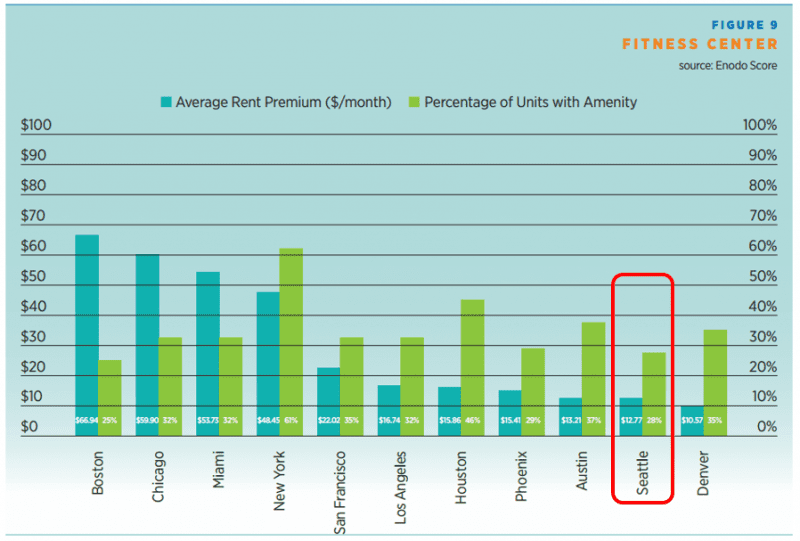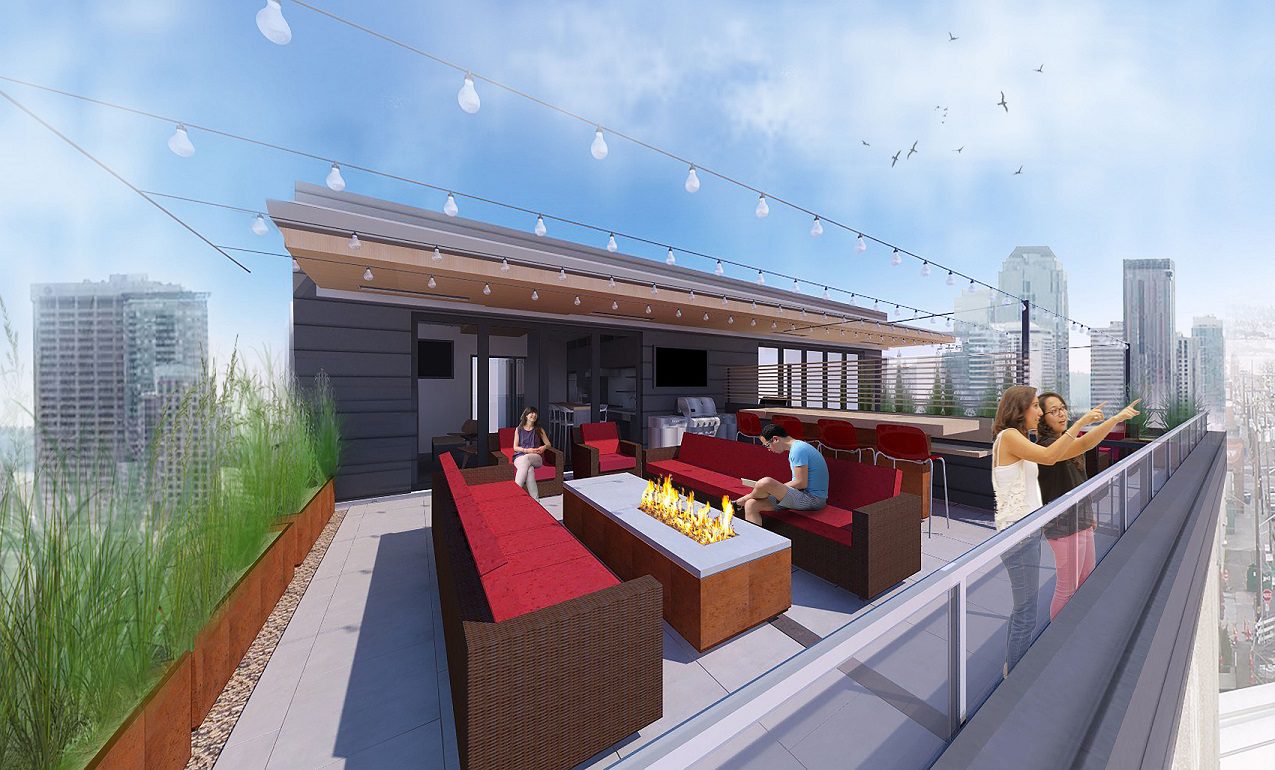Last year, an apartment complex in Seattle’s Fremont neighborhood called Bowman made headlines when they announced their latest amenity for residents: a chicken coop on the roof! The building’s developers said that the feature seemed like a great fit in the Fremont community, and that in the Seattle apartment developers race to offer amenities, a chicken coop helped them stand out. Indeed, it did!
Many of Seattle’s new high-end apartments are increasing the scope and caliber of amenities they offer to Seattle residents who are willing to pay top-of-market rental rates. Several high-rises built in the last few years offer private screening theaters, concierge services, wine bars, fire pits, lawn games, and more. As the historic appreciation of rental rates in Seattle shows some signs of tapering among new, Class A apartment buildings, developers and owners continue to compete in attracting high-wage renters who want to live in the most luxurious and interesting buildings.
Seattle’s amenities war hasn’t affected everyone in the market, however, and it doesn’t look quite like the amenity competition in other cities.
What Seattle Renters Will Pay For
When you compare Seattle to other major markets across the country, you find that amenities in Seattle may not lead to a big boost in rental rates, at least according to a recent report from the National Apartment Association. Cities like Miami, New York, and Boston experience significant rent premiums when amenities like a club house or a fitness center are added, but these amenities render a third of that premium in Seattle.

Some of these differences make sense – while a fitness center is a nice idea for renters who want to stay active, many Seattleites prefer the outdoors for their exercise. You’ll find more joggers around Green Lake or cyclists on the Burke Gilman than you’ll see in a building’s gym! However, many developers and property managers argue that they are necessary regardless.
Many of the other traditional amenities that the National Apartment Association studied aren’t yet prevalent enough in Seattle’s apartment market to bring a high premium. The financial benefits of value-adds in the form of concierge services or a rooftop deck are hard to measure in Seattle because historically most of the city’s multifamily product wasn’t located in high-rise buildings (until recently). I predict that these amenities will see a bump in demand over the next five years as the new, higher-end product comes to market… but we’re not there yet.
Rental Rate Premiums based on Premium Amenities

While the frequency and demand for these amenities ticks upward, it is hard to predict if rental rate premiums will commensurately follow suit. Rent growth is already tapering for newer, larger apartment complexes, and with thousands of high-rise located apartment units slated for delivery between 2017 – 2019, owners will need to price units as competitively as possible. Amenities will remain as necessary as ever, yet more as a competitive draw than as a driver of rental rates.
Increased competition for the coveted Seattle techie renter may push building developers into crazier and more off-the-wall amenities, particularly in newer mid-rise buildings that want to attract high-wage tenants.
Smaller, older buildings don’t face the same pressure
In other cities, older, smaller buildings are adding amenities or implementing updates in order to attract renters. While we may see the same trend in Seattle eventually, for now smaller buildings aren’t adding as many apartment-wide amenities. Owners are performing smaller in-unit upgrades to justify raising rents, but you won’t see a new fitness center in that old Capitol Hill brick building anytime soon. Demand remains high in the urban core, and the rent gap between the new buildings and the older stock of apartments provides owners of older buildings some wiggle room to increase rents over the next few years without having to fight a war on the amenity front.
The Next Generation of Amenities
Millennials are the largest generation to date, and as long as most of them are renting, developers and investors must pay attention to what amenities they’re demanding. Amenities like package storage, community lounges, and dog runs are already emerging as staples instead of shared laundry rooms or business centers.
Considering the work-live-play lifestyle for which Seattle is becoming known, expect amenities that complement that lifestyle and blend the lines between work and home. Consider seamless integration of your work station at the office and then at home – we mostly work from laptops and phones without wires. Can we make it even more simple when we traverse from work to home?
The retail experience will soon become embedded as well. Amazon is already delivering packages, and imagine if the refrigerator in your apartment unit ordered your groceries for you – automatically. We’re not far away from that technology! What if all your household “administrative” needs were met using technology? The apartment experience is vastly merging with that of hospitality.
As long as the Seattle single-family housing market stays hot (and expensive)– and all signs indicate that it will – many Millennial renters will remain in the rental pool longer than planned, and certainly longer than generations before them. Developers, investors and managers must learn to adapt and evolve to the demands of renters to stay relevant and profitable. Mastering the art of the amenity war is essential!

